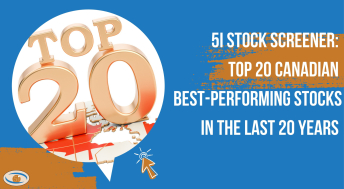This article originally appeared in the National Post on October 25th, 2014. To see it in its original form, click here.
It is always interesting to talk to investors to find out what the hot topics are (or not) for individual investors.
Last week, as we usually do in October, we attended and presented at the World MoneyShow in Toronto, and found no one wanted to talk about gold stocks. Maybe that is a contrarian indicator, and they are about to rise finally.
One of the hot topics this year was the emergence of robo-advisors: companies that use exchange-traded funds to set up a specific portfolio on an individual investor basis.
Recognizing that most mutual funds are, well, effectively useless, and that advisors are paid mostly to sell products, robo-advisors try to provide tailored ETF portfolios and offer some advice, but at a much lower overall cost than an advisor/mutual fund set-up.
This shift is interesting and we think robo-advisors such as Wealthsimple and others in Canada will be quite successful in attracting assets. Here are five reasons why.
Branding
For most investors, all ETFs are the same. There are subtle differences, but ETFs often simply represent a diversified basket of stocks, and an ETF management provider does not look too different from any other.
But knowing the people behind some of the robo-advisors, we think they have the ability to create strong brands behind their companies.
They should be able to convince investors they are different and build a solid brand in the process. Investors tend to buy products from companies they recognize, so branding is very important.
They bridge the gap
ETFs are great and certainly recommended over mutual funds, but most investors need some help with their asset allocation decisions.
Studies have shown asset allocation is far more important to investment success than stock picking is.
By offering someone to talk to, and giving advice on how to set up a portfolio, robo-advisors effectively bridge the gap between merely owning ETFs and having a full-service broker. Most individuals are willing to pay some amount for advice, and certainly like having it available.
Lower fees
Robo-advisors charge a fee to set up a properly allocated ETF portfolio on top of any ETF management fees. But the fee can be reasonable, and the combined amount is still far, far less than the management expense ratio of a mutual fund.
Investors know that fees eat away at investment returns, so if they can get some advice and lower fees over competing products, they will likely be very interested.
Personal touch
Sometimes, like perhaps during the crazy markets we’ve experienced over the past two months, investors just need someone to talk to. Robo-advisors, by offering some level of advice, can soothe investors’ nerves.
Having someone assure you that your asset allocation is still appropriate can go a long way. The key to investing, of course, is not panicking. If a robo-advisor can help you through this, their fee is likely well worth it.
Smaller accounts are accepted
To get any attention at all from a full-service broker these days, you need an account size of nearly $300,000. Brokers just do not have the time to service small accounts.
Robo-advisors, on the other hand, have such a low-cost structure that they can accept accounts as low as $5,000. They know that, with time and the proper portfolio structure, a small account can still grow into a large account.
Most banks and brokers ignore individuals with small amounts to invest, so there is a big service gap that robo-advisors are filling right now. There clearly are few places you can go for advice with just $5,000 in assets.
Robo-advisors are clearly not for everyone. But it is good to see fees continuing to be pushed downward. Of course, something has to be done about the term robo-advisor as it just doesn’t sound overly appealling. We’ll just leave that up to them, though.





Comments
Login to post a comment.